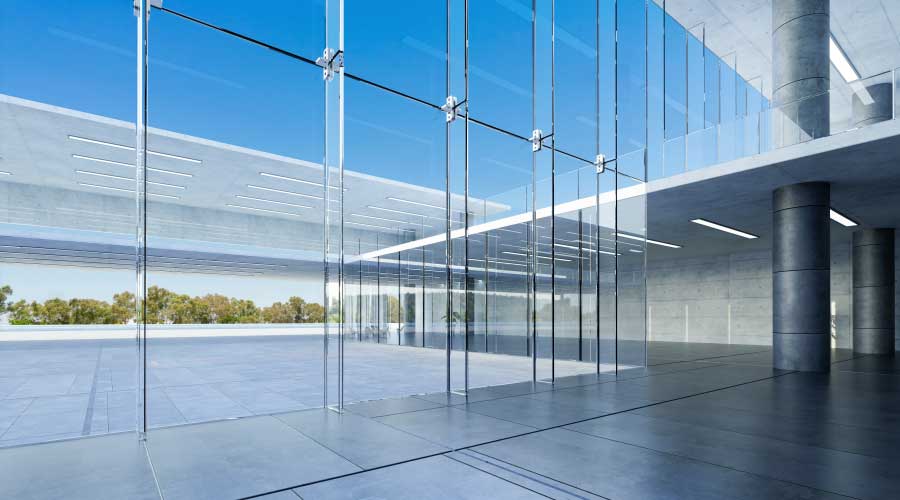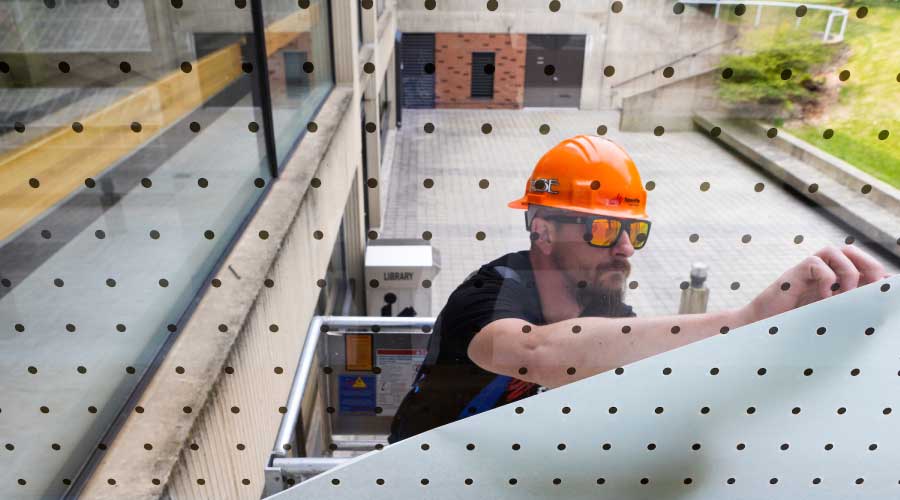Improved Window Performance A Challenge In Existing Buildings
For existing buildings, improving window performance can be a major challenge. If there are problems other than energy with the windows, or if the building is undergoing a facelift, the facility manager has a shot at convincing top management to invest in more energy efficient units. But energy savings alone won't justify replacement.
Facility managers have several other options in those cases. One familiar choice, window film, can reduce solar heat gain by blocking solar radiation. An important metric for window films is the solar heat gain coefficient, which measures the total amount of solar heat gain transmitted into a room. Spectrally selective films allow more visible light to be transmitted while reducing solar heat gain. The National Fenestration Rating Council offers ratings on films.
Another long-available option for buildings with single-pane windows is to install an interior window. The interior unit provides additional insulation and can address problems with drafts from leaky window units. Interior windows do not alter the external appearance of the building, a factor of special importance on historical buildings.
A newer choice is a high performance interior window unit for aluminum storefront, curtain wall and window wall systems. That unit uses a suspended film between two lites of glass. The unit can be filled with inert gas to boost energy performance. The vertical mounting track is designed to transfer the load of the unit to the vertical member of the existing system.
Shades aren't new, but the technology has advanced over the years, making shades increasingly popular for solar control. Many options are available, including motorized shades and sophisticated controls that can be tied to lighting and building control.
Loren Snyder, a contributing editor for Building Operating Management, is a writer who specializes in facility issues. He was formerly managing editor of Building Operating Management.
Justifying The Cost Of Energy-Efficient Windows
For facility managers interested in improving energy performance of windows, a big challenge is convincing management to make an additional investment to take advantage of newer technologies. One key point to emphasize is that energy gains will be long lasting. If the windows last for 40 years, even a fairly small reduction in energy use will bring large energy savings.
Of course, energy costs vary dramatically from region to region, so each situation will require a thorough examination of the return on investment available for such an upgrade. Ray McGowan of the National Fenestration Rating Council, notes that NFRC ratings help purchasers identify energy performance and then specify window products that meet the local code.
Hospitals, research facilities, and museums stand to benefit the most from most of these technological improvements since they require higher indoor relative humidity than a typical office building might, says Michael Louis of Simpson, Gumpertz & Heger. "The improved thermal performance that these technologies afford not only help with heating and cooling loads, but also reduces the risk for condensation to occur, which is essential for helping to maintain a healthy indoor environment," he says.
— Loren Snyder
|
Related Topics:












